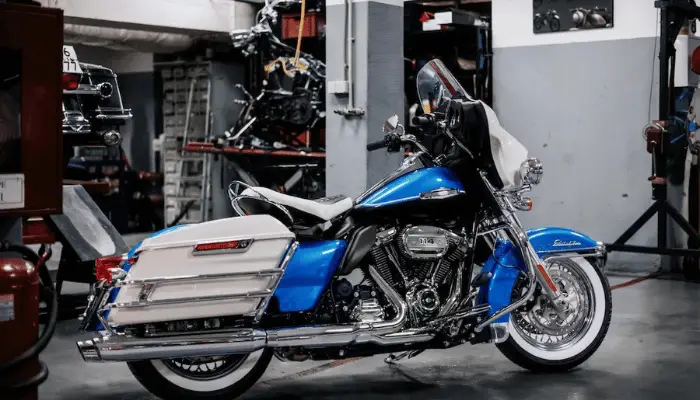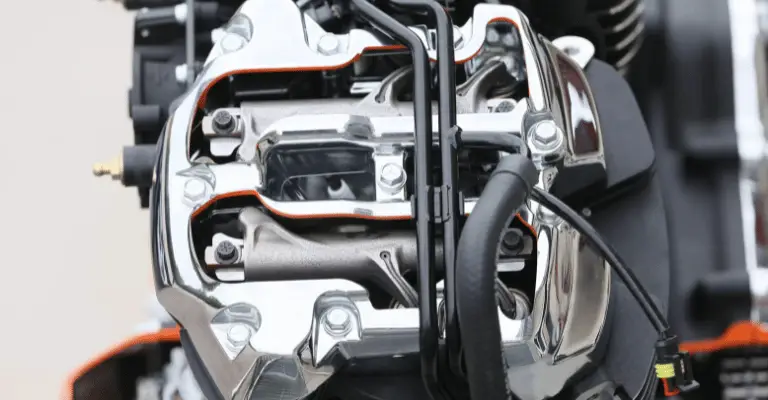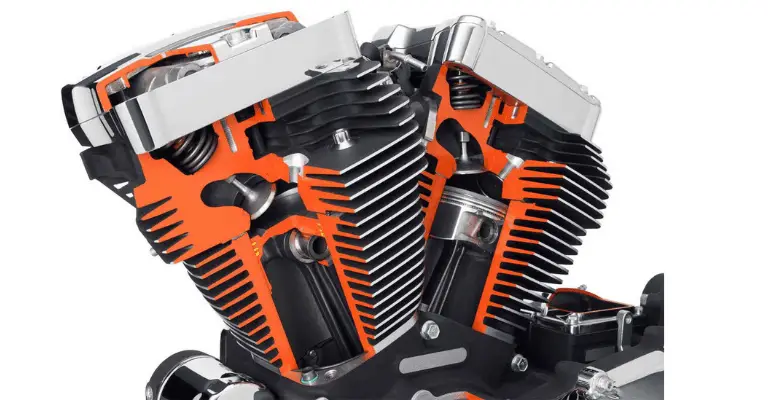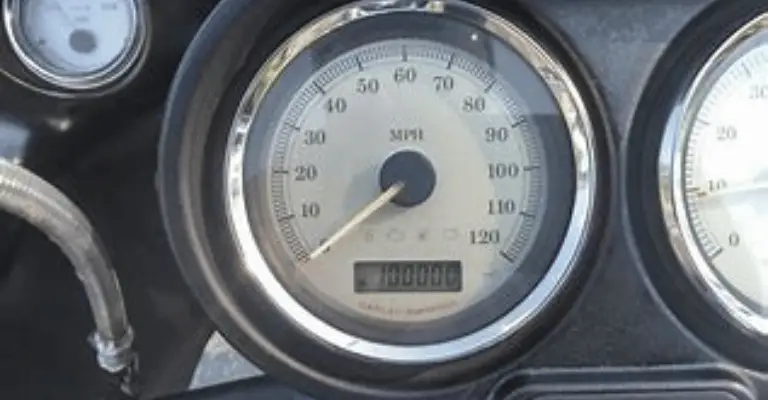Have you ever wondered, “how many miles do Harleys last?” With their strong engines and iconic design, it’s no wonder these bikes are a symbol of strength and durability. In this blog post, you’ll discover the potential lifespan of a Harley-Davidson motorcycle, factors that influence its longevity, and tips for extending your motorcycle’s mileage. You’ll also learn about common repairs, impressive mileage records, and how Harley-Davidson compares to other motorcycle brands. So what’re you waiting for? Let’s get to it!
Key Takeaways
- Harley-Davidson motorcycles can last up to 20 years and reach 150,000 miles with proper maintenance.
- Factors such as riding style, maintenance practices, weather conditions and model type influence the lifespan of a Harley.
- Regular inspections and following the right maintenance techniques are essential for preserving performance & longevity of a Harley motorcycle.
The Lifespan of a Harley-Davidson Motorcycle
Before getting into the details, here’s a video raving about the dream that is high mileage Harley Davidson motorcycles:
A well-maintained Harley-Davidson motorcycle can achieve over 100,000 miles, with some owners even surpassing 150,000 miles. However, factors such as mileage, upkeep, and the Harley engine’s history can affect the bike’s lifespan. Examining the bike’s condition and understanding the previous owner’s riding, servicing, and storage habits are key to anticipating the remaining lifespan of a Harley.
Generally, Harley engines have a typical range of mileage between 80,000 to 100,000 miles, but can reach up to 150,000 miles with proper maintenance. When considering the mileage for a Harley, the average annual mileage of a Harley-Davidson rider ranges between 3,000 and 5,000 miles. As a result, it is not uncommon for well-preserved Harleys to last for more than 20 years.
Factors Influencing the Lifespan of a Harley
Several factors can affect the lifespan of a Harley-Davidson motorcycle, including:
- Riding style
- Maintenance practices
- Weather conditions
- Model type
For instance, an aggressive riding style may lead to heightened wear and tear on the engine and other components, shortening the bike’s lifespan.
On the other hand, regular maintenance and inspections can prolong the lifespan of Harley-Davidson sports bikes by ensuring that all parts function correctly.
Weather conditions also play a role in a Harley’s longevity, as exposure to harsh elements can lead to corrosion and damage to the bike’s engine and components like the rear Harley tire and front Harley tire. Storing and protecting the bike properly, as discussed in Section 2.3, can minimize the impact of weather on your Harley’s lifespan.
Comparing Harley Models: Sportster, Softail, and Touring
Harley-Davidson offers various models such as Sportster, Softail, and Touring, each with different expected mileages. Touring bikes typically have the highest potential mileage, with some riders reporting up to 150,000 miles or more with proper care. In contrast, a sports bike with more than 25,000 miles is generally considered to have high mileage.
Regardless of the model, Sportster, Softail, and Touring bikes can all reach over 100,000 miles with regular maintenance. Some riders have even reported achieving 200,000 to 300,000 miles from the bottom end of their Harley-Davidson motorcycles. This impressive longevity showcases the brand’s potential for durability when properly maintained.
Related:
> Dyna vs Softail
> Dyna vs Sportster
> Road King vs Street Glide
> Street Glide vs Road Glide
> Road King vs Electra Glide
> Electra Glide vs Street Glide
> Super Glide vs Wide Glide
Tips for Extending Your Harley’s Mileage

Considering factors such as regular maintenance, using quality parts and fluids, and proper storage and protection can extend the mileage of your Harley-Davidson. By addressing these factors, you can ensure that your Harley not only lasts for a long time but also performs at its best throughout its lifespan.
The following subsections will detail each of these factors, offering practical tips and insights to maximize your Harley’s mileage and longevity.
Regular Maintenance and Inspections
Regular maintenance and inspections are crucial for ensuring the longevity of your Harley-Davidson motorcycle. By performing the following tasks, you can optimize your Harley’s engine performance:
- Checking the oil level
- Changing the oil and filter
- Inspecting the air filter
- Examining the spark plugs
Following the maintenance instructions in your Harley-Davidson motorcycle’s service manual is important, as this can significantly increase the bike’s lifespan. Additionally, entrusting experts for your motorcycle’s maintenance ensures that the job is done correctly and can help you identify and address potential issues before they become major repairs.
Related:
> Best Spark Plugs for Harley Davidsons
> The Best Oil For Harley Davidson Motorcycles Gets Revealed
Choosing Quality Parts and Fluids
Using quality parts and fluids can greatly enhance the performance and longevity of your Harley-Davidson motorcycle. For example, maintaining proper oil levels is paramount for the health of your engine and other components such as the transmission.
It’s vital to use genuine Harley-Davidson products when replacing parts and fluids, as they are specifically designed to cater to your bike’s unique needs. Additionally, here are some tips to help maintain your Harley’s engine in optimal condition:
- Inspect and replace the air filter as needed
- Regularly check and change the oil
- Keep the tires properly inflated
- Clean and lubricate the chain
- Check the brake pads and replace if necessary
By following these maintenance practices, you can ensure that your Harley-Davidson bike stays Harley Davidson maintained and in top shape.
Proper Storage and Protection
Proper storage and protection can play a significant role in preserving your Harley-Davidson motorcycle’s exterior and engine. To ensure proper maintenance of the exterior, it’s recommended to clean, polish, and cover the motorcycle when not in use.
For optimal storage and protection, invest in a high-quality motorcycle cover and store your bike indoors if possible. Additionally, using stands or lifts to keep your Harley off the ground can help prevent damage to the tires and other components. By taking these measures, you can effectively shield your Harley from the elements and potential harm, contributing to its extended lifespan.
Related: What’s Considered High Mileage For A Harley Davidson?
Common Harley-Davidson Repairs and When to Address Them

Harley-Davidson motorcycles may require various repairs throughout their lifespan, including engine and transmission issues, suspension and brake system problems, and electrical system malfunctions. For maintaining the performance and longevity of your Harley, promptly addressing these repairs is of utmost importance.
The following subsections delve into each of these common repair categories, discussing their significance and providing guidance on when to address them to maintain your Harley in top condition.
Engine and Transmission Repairs

Engine and transmission repairs are essential for maintaining the performance and longevity of your Harley-Davidson motorcycle. Common repairs include:
- Motor and trans case repairs
- Engine rebuilds with new original equipment components
- Cryoheat treatment to enhance the durability of metal parts
- General engine and transmission overhauls
Signs that a rebuild may be necessary include blowing smoke, valve not seating or bad seals, piston and ring issues, noisy top or bottom end of the engine, clutch issues, and gearbox issues.
Addressing these issues promptly and using top-quality parts from reliable brands will ensure that your Harley engine and transmission remain in peak condition.
Suspension and Brake System Repairs
Suspension and brake system repairs are crucial for ensuring a safe and comfortable ride on your Harley-Davidson motorcycle. Regular maintenance and inspection of suspension components, such as springs and shocks, as well as replacing any damaged or worn-out parts, can contribute to a smooth and enjoyable ride.
Additionally, it’s essential to:
- Check and replace brake pads when worn
- Flush and replace brake fluid to ensure optimal brake performance
- Inspect and adjust brake calipers and rotors as needed
By addressing these suspension and brake system repairs, you can help ensure the safety and comfort of your Harley’s ride.
Electrical System Repairs
Electrical system repairs are necessary for the proper functioning of your Harley-Davidson motorcycle’s various components. Troubleshooting and fixing issues with:
- Wiring
- Battery
- Charging system
- Other electrical components
Regular maintenance and proper care of your harley clutch are crucial to keep your Harley running smoothly, ensuring the longevity of your harley davidson engine.
Related: Best Battery for Harley Davidson Motorcycles
By addressing electrical system issues promptly and consulting resources like “How to Troubleshoot, Repair, and Modify Motorcycle Electrical Systems” for comprehensive information on specific repairs, you can help ensure your Harley-Davidson’s electrical system remains in top working order.
Harley-Davidson Mileage Records and Notable Achievements

Harley-Davidson motorcycles have achieved impressive mileage records, showcasing the brand’s potential for longevity. Some of these notable achievements include Dave Zien’s Million-Mile Harley and the 1913 world record set by Ray Watkins and Ben Torres, who rode 346 miles in 7 hours on a dirt track.
In the following subsections, we’ll explore these milestones in more detail, further illustrating the impressive durability and performance that Harley-Davidson motorcycles can offer.
The Million-Mile Harley
Dave Zien’s Million-Mile Harley is a testament to the potential lifespan of a well-maintained Harley-Davidson motorcycle. Zien, a former Wisconsin State Senator, completed an 18-year journey, amassing one million miles on his 1991 FXRT. His incredible accomplishment earned him a place in the AMA Motorcycle Hall of Fame.
The Million-Mile Harley serves as an example of the longevity that a Harley-Davidson motorcycle can achieve with proper maintenance. By following the tips and advice shared in this blog post, you too can maximize the lifespan and performance of your Harley.
Longevity in the Harley Community
The Harley community is known for its dedication to maintaining and preserving their motorcycles for extended periods. For example, Don Huffman, an Air Force veteran, has been riding and restoring Harley-Davidson motorcycles for over 70 years.
By adhering to regular maintenance schedules, using quality parts and fluids, and protecting their bikes from the elements, Harley enthusiasts can enjoy their motorcycles for many years to come. The dedication of these riders serves as an inspiration for others, demonstrating the potential for longevity in the Harley community.
Harley-Davidson vs. Other Motorcycle Brands
Again, before diving deeper, here’s a video talking about high mileage motorcycles – in general – not just for Harleys. This can be used to offer a comparison into the reliability of other brands as they relate to Harley’s themselves:
Comparing Harley-Davidson to other motorcycle brands reveals differences in reliability, lifespan, and maintenance costs. While Harley-Davidson motorcycles are renowned for their reliability and longevity, they may not be as reliable as other brands such as Suzuki, BMW, and Honda.
This section delves deeper into the comparisons between Harley-Davidson and other motorcycle brands, examining factors such as reliability, lifespan, and maintenance costs.
Reliability and Lifespan Comparisons
Harley-Davidson motorcycles, also known as harley davidson bikes, generally have a longer lifespan than some competitors, but may not be as reliable as others. According to a Consumer Reports study, the reliability rating for the average Harley-Davidson is 72%, which is comparable to other brands like Suzuki, BMW, and Honda. For those who are fans of harley davidsons, this information can be helpful in making an informed decision when considering harley motorcycles.
Despite this, well-maintained Harley-Davidson motorcycles can last for more than 25 years, showcasing the brand’s potential for durability. Following the tips and advice provided in this blog post will ensure your Harley remains reliable and performs at its best throughout its lifespan.
Related: Are Harley Davidsons Reliable?
Maintenance and Repair Costs
Maintenance and repair costs for Harley-Davidson motorcycles can vary depending on the type of model and the age of the motorcycle. Generally, these costs are higher than those of other brands. However, with regular maintenance and inspections, quality parts and fluids, and proper storage and protection, the cost of ownership can be reduced.
Though Harley-Davidson motorcycles may demand more maintenance and repair than some other motorcycle brands, their maintenance costs are comparable to other bikes in terms of required services and overall expenses.
Related reads:
> Harley Davidson Stator Replacement Cost
> Harley Davidson Clutch Replacement Cost
> Harley Davidson Engine Rebuild Cost
> Harley Davidson Oil Change Cost
> Harley Davidson Drive Belt Replacement Cost
Summary
In conclusion, Harley-Davidson motorcycles are known for their potential to achieve impressive longevity with proper care and maintenance. By understanding the factors that influence a Harley’s lifespan, following regular maintenance schedules, using quality parts and fluids, and protecting your bike, you can maximize the mileage and performance of your Harley. Whether you’re a seasoned rider or new to the Harley community, the dedication and achievements of fellow Harley enthusiasts can serve as an inspiration for ensuring your motorcycle’s longevity and enjoying the open road for years to come.
Frequently Asked Questions
How many miles is alot on a Harley?
Harley-Davidson motorcycles can take up to 40,000 to 50,000 miles without wear on their engines, so this is considered a high mileage point. However, it’s important to remember that the upkeep of the motorcycle plays a large role in determing what’s high mileage or not.
What is the average mileage for a Harley-Davidson?
Harley-Davidson® motorcycles typically get 45 to 55 MPG, though certain models can achieve up to 59 MPG. Your riding habits may affect your mileage too. So keep this in mind, and remember to see for yourself.
Do Harleys last longer than other bikes?
Harleys are known for their durability and longevity when properly maintained. With minimal maintenance required, these bikes can last for decades, making them more cost-effective than other brands on the market. Harleys are a great investment for those looking for a reliable and long-lasting motorcycle. With proper maintenance, these bikes can last for years, providing
What are some common repairs for Harley-Davidson motorcycles?
Common repairs for Harley-Davidson motorcycles include engine and transmission issues, suspension and brake system problems, and electrical system malfunctions. However, if you’ve been in the vehicular world for any amount of time, you’ll realize this is the case for most vehicles also.
What factors can affect the lifespan of a Harley-Davidson motorcycle?
Riding style, maintenance practices, weather conditions, and model type can all affect the lifespan of a Harley-Davidson motorcycle. This is true for any motorcycle, Harley-Davidsons included.
